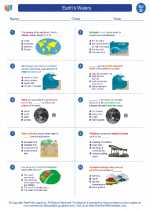Understanding Genotype
Definition
The genotype of an organism refers to its complete genetic makeup, including all the genes and alleles it carries.
Alleles
Each gene in an organism can have different forms, known as alleles. For example, the gene for eye color may have alleles for blue, brown, or green eyes.
Homozygous and Heterozygous Genotypes
An organism can have either homozygous genotype (two identical alleles for a particular gene, e.g., AA or aa) or heterozygous genotype (two different alleles for a particular gene, e.g., Aa).
Punnett Squares
Punnett squares are used to predict the possible genotypes of offspring based on the genotypes of the parents. They are helpful in understanding the probability of certain traits being passed on to the next generation.
Phenotype
The genotype of an organism determines its phenotype, which is the observable physical or biochemical characteristics resulting from the interaction of the genotype with the environment.
Genetic Variation
Genetic variation within a population is a result of the different combinations of genotypes. This variation is essential for adaptation and evolution.
Examples
Examples of genotype can include the specific combination of alleles for traits such as hair color, blood type, and susceptibility to certain diseases.
.◂Science Worksheets and Study Guides Fourth Grade. Earth's Waters

 Worksheet/Answer key
Worksheet/Answer key
 Worksheet/Answer key
Worksheet/Answer key
 Worksheet/Answer key
Worksheet/Answer key
 Vocabulary/Answer key
Vocabulary/Answer key
 Vocabulary/Answer key
Vocabulary/Answer key
